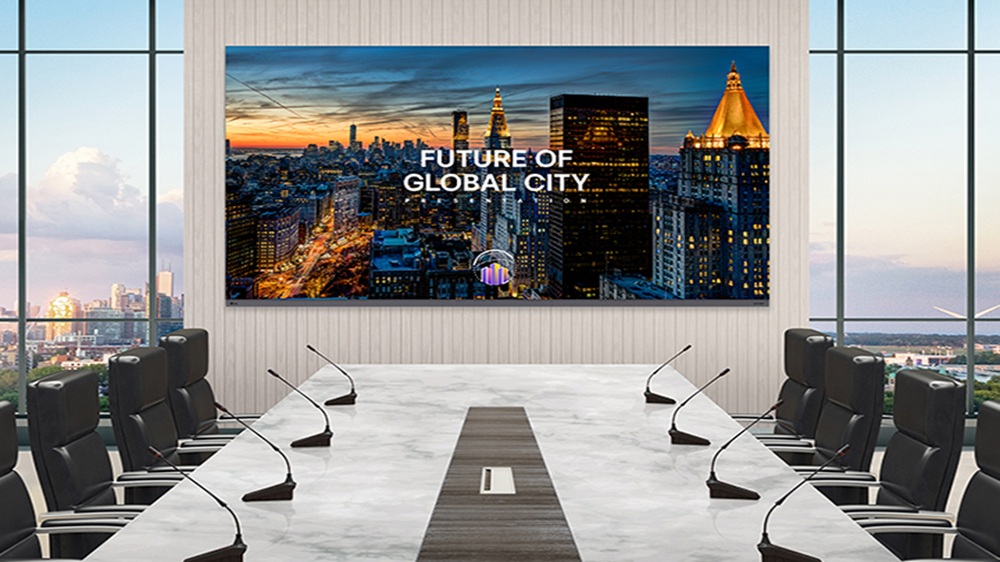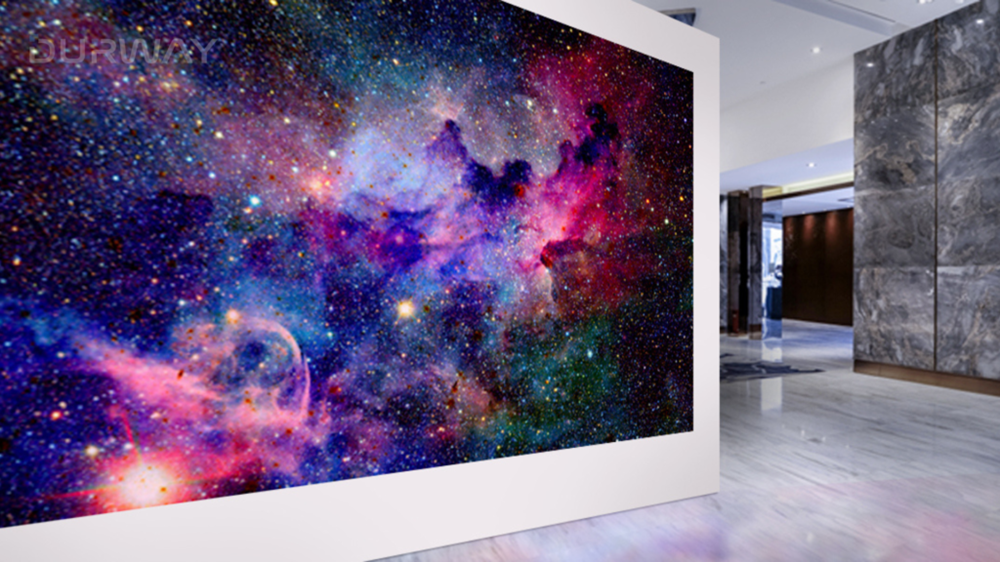Indoor LED displays are a popular choice for advertising and entertainment. However, many people are unsure how to select a high-quality screen at a reasonable price.
In this guide, we will walk you through key considerations before investing in an indoor LED display, including its basic definition, development trends, and pricing.
1. What Is an Indoor LED Display?
As the name suggests, an indoor LED display refers to medium-to-large LED screens designed for indoor use. These displays are commonly seen in supermarkets, shopping malls, banks, offices, and more.
Unlike other digital displays, such as LCD screens, LED displays do not require backlighting, which improves brightness, energy efficiency, viewing angles, and contrast.
Differences Between Indoor and Outdoor LED Displays
Here are the main differences between indoor and outdoor LED displays:
-
Brightness
Indoor screens usually require lower brightness due to controlled ambient light.
Typically, indoor displays have a brightness of around 800 nits, while outdoor screens require at least 5500 nits to display content clearly. -
Pixel Pitch
Pixel pitch is closely related to viewing distance.
Indoor LED displays are viewed from a closer distance, requiring higher pixel resolution to avoid image distortion.
Outdoor LED screens, such as P10 displays, are more common. Larger outdoor billboards often require higher resolutions. -
Protection Level
Indoor LED displays generally need an IP43 rating, while outdoor displays require at least IP65 due to varying weather conditions. This ensures sufficient water and dust resistance against rain, high temperatures, sunlight, and dust. -
Cost
The price of LED displays depends on materials, size, and resolution.
Higher resolution means more LED modules per panel, which increases costs. Similarly, larger screens are more expensive.
2. Indoor LED Display Pricing
2.1 Five Factors Affecting Indoor LED Display Prices
-
IC – Controller IC
Various ICs are used in LED displays, with driver ICs accounting for about 90%.
They provide compensation current for LEDs and directly affect color uniformity, grayscale, and refresh rate. -
LED Modules
As the most critical component, LED module prices depend on pixel pitch, LED size, and brand.
Popular brands include Kinglight, NationStar, Sanan, Nichia, Epson, Cree, and more.
Higher-cost LEDs generally offer more stable performance, while lower-cost brands rely on competitive pricing to gain market share. -
LED Power Supply
Power adapters provide the current required for LED screens to operate.
International voltage standards are 110V or 220V, while LED modules typically operate at 5V. A power supply converts the voltage accordingly.
Usually, 3–4 power supplies are needed per square meter. Higher power consumption requires more supplies, increasing costs. -
LED Display Cabinet
Cabinet material significantly affects price.
Differences in material density matter—for example, steel is 7.8 g/cm³, aluminum 2.7 g/cm³, magnesium alloy 1.8 g/cm³, and die-cast aluminum 2.7–2.84 g/cm³.
2.2 How to Calculate Indoor LED Display Prices
To estimate costs, consider these five factors:
-
Screen Size – Know the exact dimensions.
-
Installation Environment – Determines specifications, e.g., outdoor installation requires IP65 protection.
-
Viewing Distance – Influences pixel pitch; closer distances require higher resolution.
-
Control System – Choose appropriate components, such as sending/receiving cards or video processors.
-
Packaging – Options include cardboard (modules/accessories), plywood (fixed parts), or air freight packaging (rental use).
3. Advantages and Disadvantages of Indoor LED Displays
3.1 Six Advantages of Indoor LED Displays
-
High Brightness Adjustment
Unlike projectors or TVs, LED displays can achieve high brightness in real time, reaching up to 10,000 nits. -
Wider Viewing Angle
LED displays offer viewing angles 4–5 times wider than projectors (140°–160° typical), allowing almost any viewer to see content clearly. -
Superior Image Performance
LED displays convert electricity to light efficiently, providing higher refresh rates, reduced latency, minimal ghosting, and high contrast compared to LCDs. -
Longer Lifespan
LED displays can last up to 50,000 hours (approx. 15 years at 10 hours/day), while LCDs last about 30,000 hours (8 years at 10 hours/day). -
Customizable Sizes and Shapes
LED modules can be assembled into video walls of various shapes, such as floor-standing, circular, or cubic displays. -
Eco-Friendly
Lightweight designs reduce transportation fuel use; mercury-free manufacturing and longer lifespans lower energy consumption and waste.
3.2 Disadvantages of Indoor LED Displays
-
High Initial Cost – While upfront costs may be higher, longevity and low maintenance offer long-term savings.
-
Potential Light Pollution – High brightness can cause glare, but solutions like light sensors or auto-brightness adjustments mitigate this.
4. Features of Indoor LED Displays
-
High-Resolution Screen – Pixel pitch is small for sharp, smooth images, ranging from P1.953mm to P10mm.
-
Flexible Installation – Can be installed in windows, stores, malls, lobbies, offices, hotel rooms, and restaurants.
-
Custom Sizes – Various shapes and sizes available.
-
Easy Installation & Maintenance – User-friendly design allows quick assembly/disassembly.
-
High Image Quality – High contrast, 14–16-bit grayscale, and adjustable brightness.
-
Cost-Effective – Affordable pricing, 3-year warranty, and reliable after-sales service.
-
Creative Applications – Supports transparent, interactive, and flexible LED screens for innovative setups.
5. Development Trends of Indoor LED Displays
-
Integrated LED Displays – Combine video communication, presentation, collaborative whiteboard, wireless projection, and smart controls into one. Transparent LEDs offer superior user experiences.
-
Virtual Production LED Walls – Indoor LED screens meet high pixel pitch requirements for XR and virtual production, enabling interaction with digital environments in real time.
-
Curved LED Displays – Ideal for creative installations, stadiums, and shopping malls, offering seamless curved surfaces.
-
Stage LED Displays – Rental or background screens provide seamless, large-scale visuals that surpass LCD capabilities.
-
High-Resolution LED Displays – Offer high refresh rates, wide grayscale, high brightness, no ghosting, low power consumption, and minimal electromagnetic interference.
Hot Electronics is committed to delivering high-standard LED displays with clear images and smooth video for global clients.
6. Conclusion
We hope this guide provides practical insights into indoor LED display screen .
Understanding their applications, features, pricing, and common considerations will help you get a high-quality display at a favorable price.
If you’re looking for more LED display knowledge or want a competitive quote, feel free to reach out to us anytime!
Post time: Nov-10-2025


